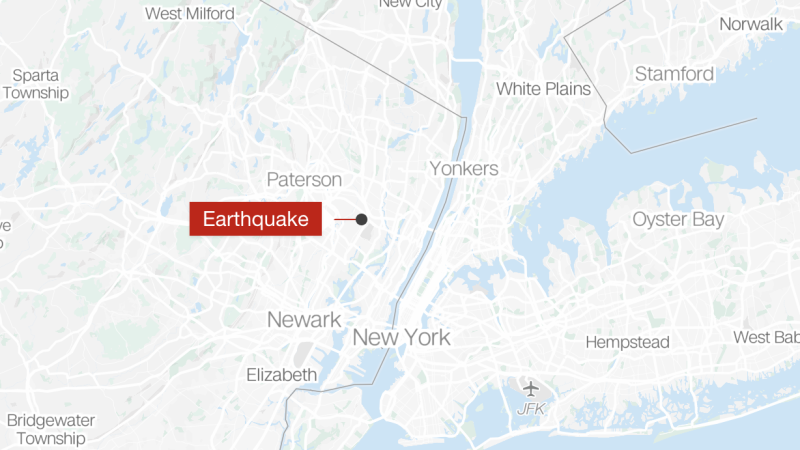What Happened
On the evening of August 2, 2025, a small earthquake with a magnitude of 3.0 struck the New York metropolitan area, specifically centered in Hasbrouck Heights, New Jersey. The tremor occurred at approximately 10:18 PM EDT and was reported to be located about six miles below the surface. Residents in New York City, northern New Jersey, and parts of Westchester County felt the effects of the quake, with many taking to social media to share their experiences. Reports indicated that the shaking was brief, with one Brooklyn resident describing it as a slight swaying.
Despite the noticeable tremors, emergency management officials reported no immediate damage or injuries. The New York City Emergency Management office confirmed that there were no significant impacts from the earthquake, and the tremor was characterized as mild compared to a previous earthquake in the region, which had a magnitude of 4.8 in 2024.
Key Details
- Magnitude: 3.0
- Epicenter: Hasbrouck Heights, New Jersey
- Depth: Approximately 6 miles
- Time of Occurrence: 10:18 PM EDT on August 2, 2025
- Affected Areas: Tremors felt in New York City, northern New Jersey, and as far as 60 miles away, including parts of Westchester County and western Connecticut.
- Response: No reports of injuries or damage; local emergency services were notified and monitored the situation.
- Historical Context: The last notable earthquake in the region was a 4.8 magnitude quake in 2024, which was significantly stronger and caused more widespread concern.
Multiple Perspectives
The earthquake elicited a range of reactions from residents. Many expressed surprise and confusion, with some initially mistaking the tremor for a passing truck or train. Social media platforms were flooded with comments from individuals who felt the quake, highlighting the public’s engagement with the event. For instance, one resident in Jersey City questioned, “What was that that just shook the house?” indicating a level of alarm among those unaccustomed to seismic activity in the area.
Officials, including the Bergen County Sheriff and the Office of Emergency Management, reassured the public that there was no cause for alarm, emphasizing that the earthquake was minor and that emergency services were prepared to respond if necessary. This duality of experience—between public concern and official reassurance—illustrates the varying perceptions of seismic events in regions not typically associated with earthquakes.
Context & Background
Earthquakes in the northeastern United States are relatively rare compared to more seismically active regions like California. The last significant earthquake in New Jersey occurred in 1783, registering a magnitude of 5.3. The rarity of such events in this area often leads to heightened public interest and concern when they do occur. The 2024 earthquake, which was stronger than the recent tremor, marked one of the largest seismic events in the region in over a century, contributing to a growing awareness of the potential for earthquakes in the Northeast.
The geological characteristics of the region, including its underlying rock formations, contribute to the infrequency of earthquakes. However, the occurrence of even minor tremors can serve as a reminder of the natural forces at play beneath the surface, prompting discussions about preparedness and response in urban areas.
What We Don’t Know Yet
As of now, there are no reports of damage or injuries resulting from the earthquake, but the situation remains under observation by local authorities. It is unclear if there will be any aftershocks following the initial tremor, as is often the case with earthquakes. Additionally, while the USGS has provided initial data on the quake, further analysis may yield more insights into its causes and implications for the region.
The public’s response to the earthquake, particularly in terms of preparedness for future seismic events, is also an area that may require further exploration. Given the rarity of earthquakes in the Northeast, the effectiveness of emergency management protocols in addressing public concerns and ensuring safety during such events is an ongoing consideration.
In summary, while the August 2 earthquake was minor and resulted in no reported damage, it has sparked conversations about seismic activity in the Northeast and the importance of public awareness and preparedness in the face of natural events.


